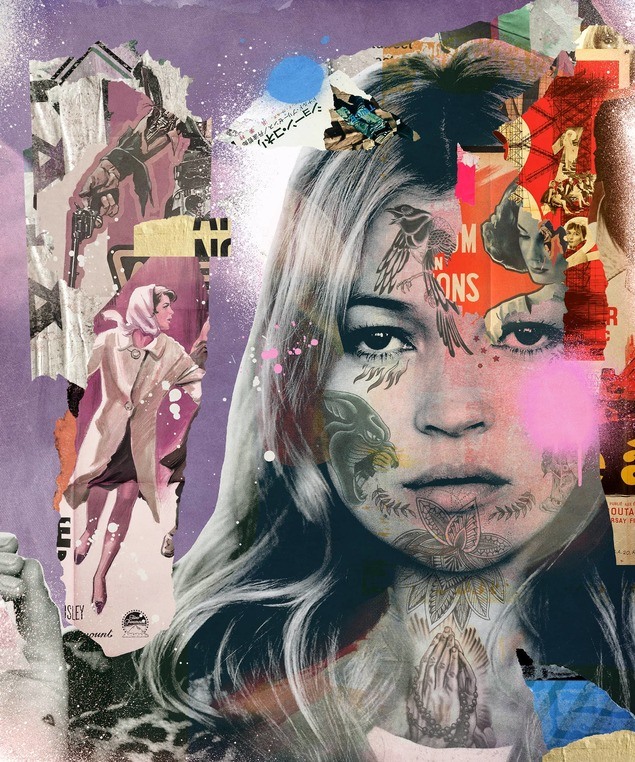Né en 1928 de parents issus de la classe ouvrière, Andy Warhol est aujourd'hui l'un des noms les plus connus de l'art expérimental. L'éponyme M. Warhol était bien des choses : superstar du pop art papillon social zélé et cinéaste avisé, pour n'en citer que quelques-unes. Outre son talent artistique, Warhol avait le don de la parole.
Aussi philosophe qu'artiste, il semble qu'aujourd'hui encore, nous puissions nous inspirer des citations de Warhol. Découvrez quelques-unes des meilleures citations d'Andy Warhol sur la vie, les célébrités et l'art.

« L'art, c'est tout ce que l'on peut se permettre »
Andy Warhol a redéfini ce que l'art pouvait être à une époque marquée par d'énormes bouleversements sociaux, politiques et technologiques. Son éthique emblématique de la contre-culture est aussi présente aujourd'hui qu'elle l'était il y a 60 ans.
Prenons l'exemple du paysage artistique actuel : Les candidats au prix Turner sont de plus en plus aventureux dans l'utilisation de leurs supports, allant des excréments d'éléphants aux tampons hygiéniques. À la Frieze New York en 2018, une benne à ordures d'une valeur de 70 000 dollars a même fait son apparition ! C'est vrai : si vous pouvez vous en sortir, cela peut être de l'art.

« Vous devez faire en sorte que les petites choses qui vous ennuient habituellement vous fassent soudain vibrer »
Andy Warhol a vécu une vie radicale et déterminée. Fidèle à sa parole, il a réinventé l'imagerie commerciale dans la presse et le cinéma pour donner naissance au mouvement Pop Art. Des boîtes de soupe aux boîtes Brillo en passant par les bouteilles de Coca-Cola, Warhol a transformé des objets du quotidien en œuvres d'art minimalistes changeant à jamais l'art moderne.
Runaway, 2020, pigment on 300 GSM archival paper, par Peter Horvath
« Je suis une personne profondément superficielle »
Ces images cachent plutôt qu'elles ne révèlent la personne qui se trouve derrière la caméra. Cette prise de conscience est en partie à l'origine de la genèse de ses études sur l'autoportrait.
En tenant un journal obsessionnel et en éditant sa vie quotidienne par le biais de la photographie et du cinéma, Warhol a conçu son image publique. La marque Andy Warhol, connue dans le monde entier, a été astucieusement créée par lui-même. Les lunettes caractéristiques, les cheveux en désordre et le regard vide et inquiétant que nous connaissons si bien déguisent et caricaturent le véritable Andy Warhol.

« L'idée n'est pas de vivre éternellement ; il s'agit de créer quelque chose qui va »
Andy Warhol était profondément intéressé par le concept du temps et de la mort. Nombre de ses œuvres autobiographiques traitent du passage du temps. Aujourd'hui, ses œuvres expérimentales sont saluées comme des explorations radicales qui dépassent les frontières de l'art conventionnel. Time Capsules (1974) cataloguait sa vie quotidienne, exposant et conservant des objets tels que des magazines, des livres et des reçus de taxi, conférant ainsi une grande importance à des objets jusqu'alors insignifiants.

« Ne pensez pas à faire de l'art, faites-le simplement. Laissez les autres décider si c'est bon ou mauvais, s'ils l'aiment ou s'ils le détestent. Pendant qu'ils décident, faites encore plus d'art »
Alors que la plupart de ses pairs se rebellaient contre l'esthétique et la culture de plus en plus commerciale des années 60, Andy Warhol, lui, s'en imprégnait. Associant des idées d'avant-garde à des techniques immensément commerciales telles que l'impression de masse, l'artiste a créé des œuvres d'art originales et controversées. Bien qu'accueillies avec des sentiments mitigés à l'époque, ses gravures Pop Art comptent parmi les plus vénérables de l'histoire de l'art.

« Il serait très glamour de se réincarner sous la forme d'une grosse bague au doigt de Liz Taylor »
Andy Warhol s'est intéressé à la mortalité. Cette curiosité s'explique d'abord par sa foi catholique et par le fait qu'il a passé une grande partie de son enfance à lutter contre la tuberculose. Il a également rencontré de près la faucheuse lorsque Valerie Solanas, féministe et auteur du SCUM Manifesto, a tenté de l'assassiner.
Les crânes et autres images obsédantes sont, sans surprise, très présents dans son œuvre. La collection Death and Disaster, en particulier, présente Suicide (Purple Jumping Man) (1963), qui explore le concept freudien stimulant d'imaginer notre mort, ou même de nous souvenir de notre mort, comme un moyen d'appréhender l'avenir.

« À l'avenir, tout le monde sera célèbre dans le monde entier pendant 15 minutes »
Cette épigramme quelque peu prémonitoire figurait à l'origine dans le programme d'une exposition de ses œuvres au Moderna Museet de Stockholm, en Suède, en 1968...
Avec les écrans qui se multiplient de jour en jour et l'autopromotion qui envahit le monde, les barrières de la célébrité sont, en effet, proches de l'extinction. Warhol n'était pas seulement un artiste, il semble qu'il était aussi un voyant !

« Parfois, les gens laissent le même problème les rendre malheureux pendant des années, alors qu'ils pourraient simplement dire : Et alors ? C'est l'une des choses que je préfère dire. Et alors ? »
Andy Warhol ne demandait pas la permission de faire les choses différemment. Tout comme Marcel Duchamp, un rebelle conceptuel plus ancien, Warhol a remis en question le statu quo du monde de l'art.
Armé de ses reproductions de polaroïds et de ses tirages, l'artiste a exploité les médias pour diffuser ses œuvres et ses idées au plus grand nombre. Il est donc l'un des nombreux avant-gardistes à qui l'on doit d'avoir fait entrer l'art dans le domaine public, hors des espaces privés et élitistes. Warhol a également inventé ce que signifie être un influenceur social, pourrait-on dire.

Andy Warhol n'a pas seulement changé la façon dont nous voyons l'art expérimental, mais aussi la façon dont nous consommons le monde qui nous entoure : « Une fois que vous avez compris le pop, vous ne pouvez plus jamais voir un panneau de la même manière ».

